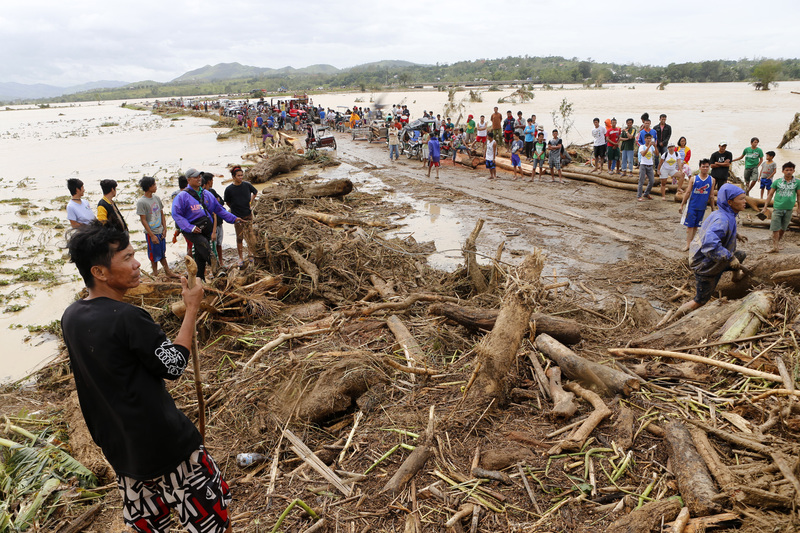UNICEF concerned about children in unreached areas affected by Typhoon Koppu/Lando UNICEF appeals for HK$21.8 million (US$2.8 million) for replenishment of supplies

© UNICEF Philippines/2015/Jeoffrey Maitem
Stranded motorists in the aftermath of typhoon Koppu that hit Palayan city, Nueva Ecija province. The slow moving Typhoon Koppu/Lando has ought torrential rain and strong winds, causing floods, flying deis, power outages, downed communication lines, and damaged roads and idges.
Manila/HONG KONG, 19 October 2015 — UN children’s agency UNICEF is on high alert after Typhoon Koppu (Local name Lando) made landfall in the Philippines on Sunday morning. The slow moving typhoon has ought torrential rain and strong winds, causing floods, landslides, flying deis, power outages, downed communication lines, and damaged roads and idges.

© UNICEF Philippines/2015/Jeoffrey Maitem
A mother carries her daughter as they evacuate from the town of Laur, Nueva Ecija, in the aftermath of Typhoon Koppu. UNICEF is concerned about the wellbeing of children in areas affected by the typhoon, which includes mountainous and hard-to-reach areas. |
According to today’s Government reports, 55,554 persons have been evacuated. More than 12,125 families are now staying in 136 evacuation centers; 104,299 people have been displaced.
Around 15 incidents of flooding were reported in Pangasinan, Isabela, Nueva Ecija, Tarlac and Bulacan. Assessments planned in the coming week will confirm numbers and extent of impact as communication with affected communities are restored later in the week. UNICEF notes the government’s preparedness and early action in pre-emptive evacuation and wide spread public information have minimized damage to life and property. The Government has activated response clusters.
In any event of disasters, children are the most vulnerable. UNICEF activated its emergency preparedness measures days before the typhoon struck the archipelago. |
“UNICEF’s first priority is to ensure children are safe and protected. Following a typhoon, children face risks from contaminated water sources, lack of food, epidemics such as cholera, hypothermia, diarrhea and pneumonia. Secondly, we must ensure that the rhythm of children’s lives are restored and that they get back to school as soon as possible,” UNICEF Philippines Representative Lotta Sylwander says, “Typhoon Koppu’s slow moving path includes mountainous and hard-to-reach areas, we are concerned about the wellbeing of all affected children. UNICEF is ready to move with response as soon as asked by the Government.”
While reports from affected areas are trickling in, UNICEF’s emergency experts foresee needs in restoration of safe water supply for flooded areas, health and nutrition specifically support for breastfeeding mothers and new born children, and resumption of children’s education. UNICEF has prepositioned supplies for about 12,000 families which include water purification tablets, hygiene kits, medicines, school supplies, therapeutic food, tents and generators.
UNICEF appeals for HK$21.8 million (US$2.8 million) for replenishment of supplies. Typhoon Koppu is the 12th tropical cyclone to enter the Philippines this year. The country typically experiences over 20 typhoons a year. This year is predicted to ing more intense typhoons in the latter part as a result of the El Niño phenomenon. Currently, there is another Typhoon, named Champi, looming on the Philippines.











